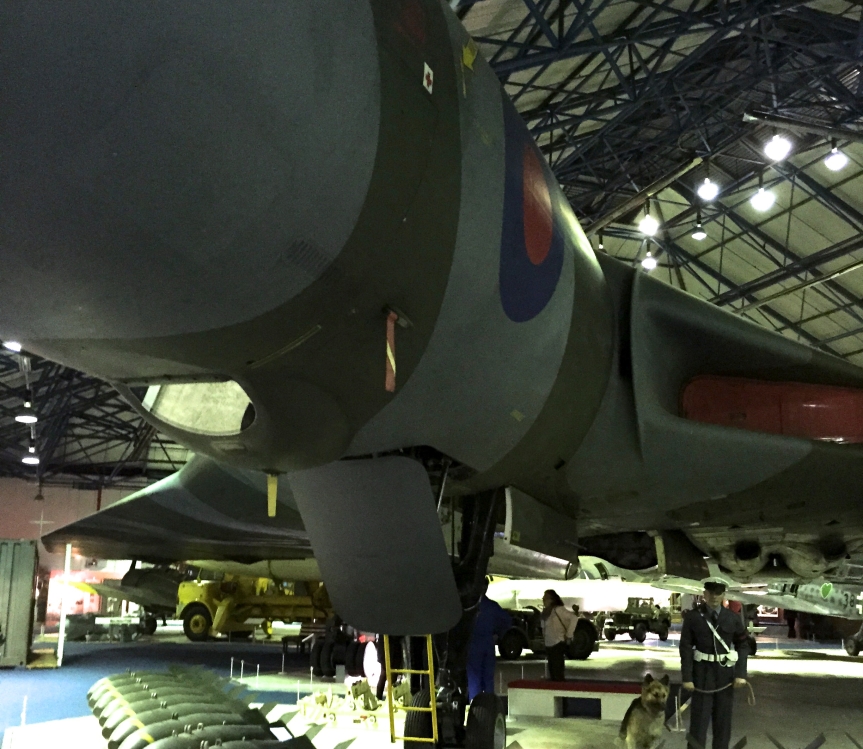
I visited the RAF Museum at Hendon, London, recently. I’d booked one of their open cockpit opportunities, in this case the rare chance to gain access to the flight deck of their Avro Vulcan B2 bomber.
Potted history: This particular aircraft – XL318 – has been a museum exhibit since 1982. Designed in 1947 to fulfil the Cold War role of nuclear strike, XL318 was delivered to 617 Squadron in 1961. In those days it was painted in the white “nuclear blast reflective finish”. Here’s a picture of some Vulcans on a QRA dispersal:
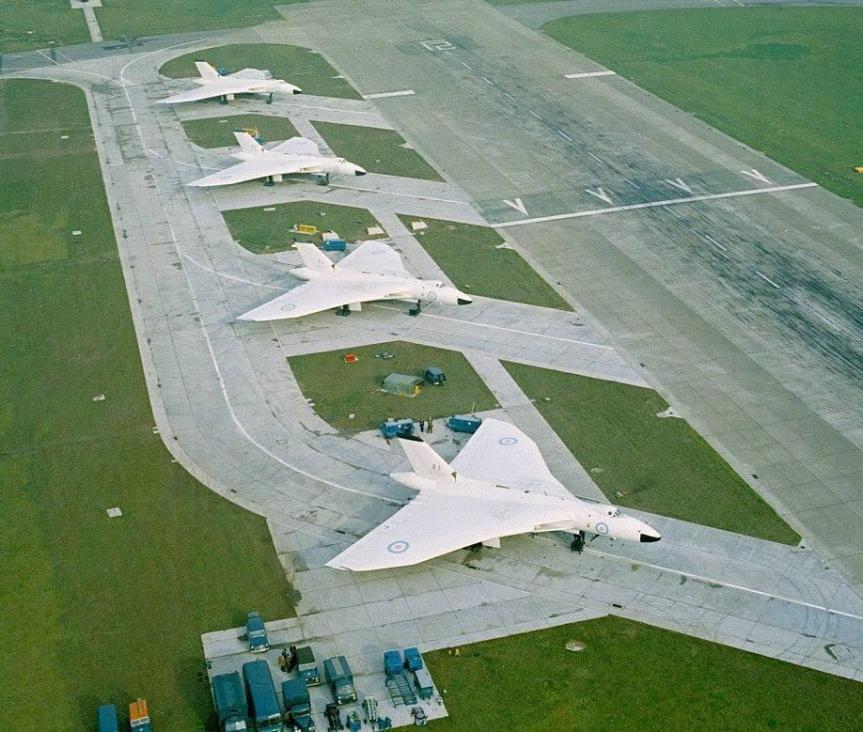
By 1966 XL318 had been repainted in the low level camouflage finish it wears today. In December 1981 it made its last flight, at which time 617 Squadron was disbanded as a Vulcan squadron (later to reform as a Tornado Squadron in 1983).
On to my visit. I was met underneath XL318 by one of the Museum’s volunteers. Then up the crew ladder I went!
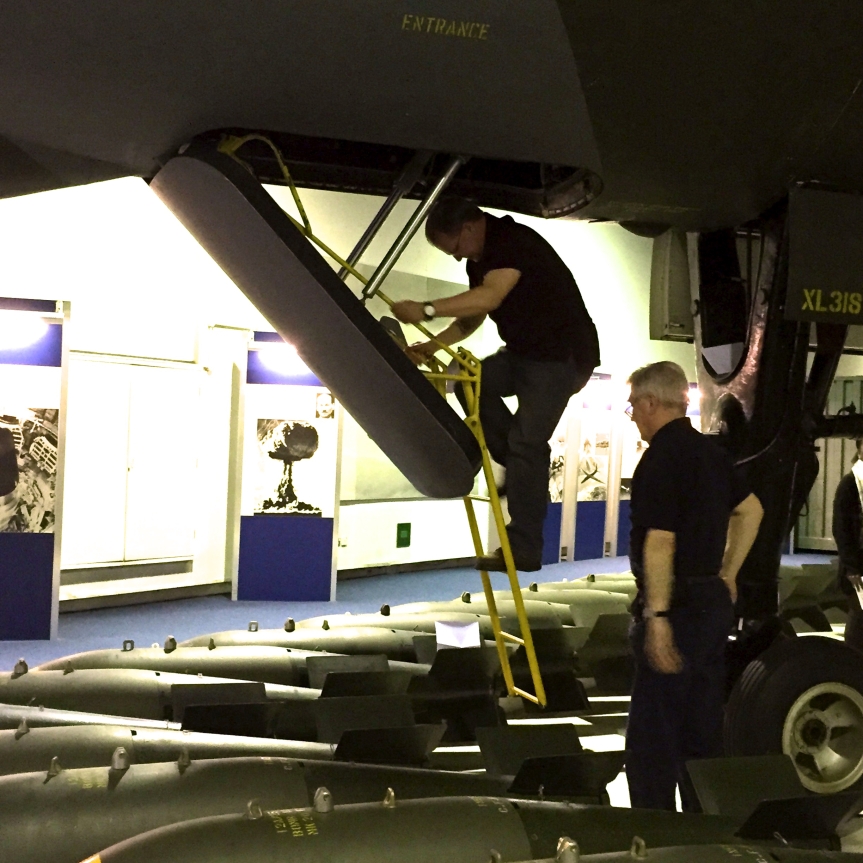
Once inside, I was met by two more volunteers who started off by showing me around the “back seat” crew area where the Navigator Plotter, Navigator Radar and Air Electronics Officer were stationed. Revealing its early post-war design, the Vulcan has a conventional bomb aiming window, a feature it shares with its wartime ancestor the Avro Lancaster. The Vulcan was never fitted with an optical bomb sight, however, as by the time it went into service it was equipped with a radar bomb sight which was operated by the Navigator Radar.
Here’s me looking out of the bomb aimer’s window (photo taken by my daughter!)
Note the yellow ladder up to the flight deck – this is just for visitors and wouldn’t be there in an operational Vulcan.
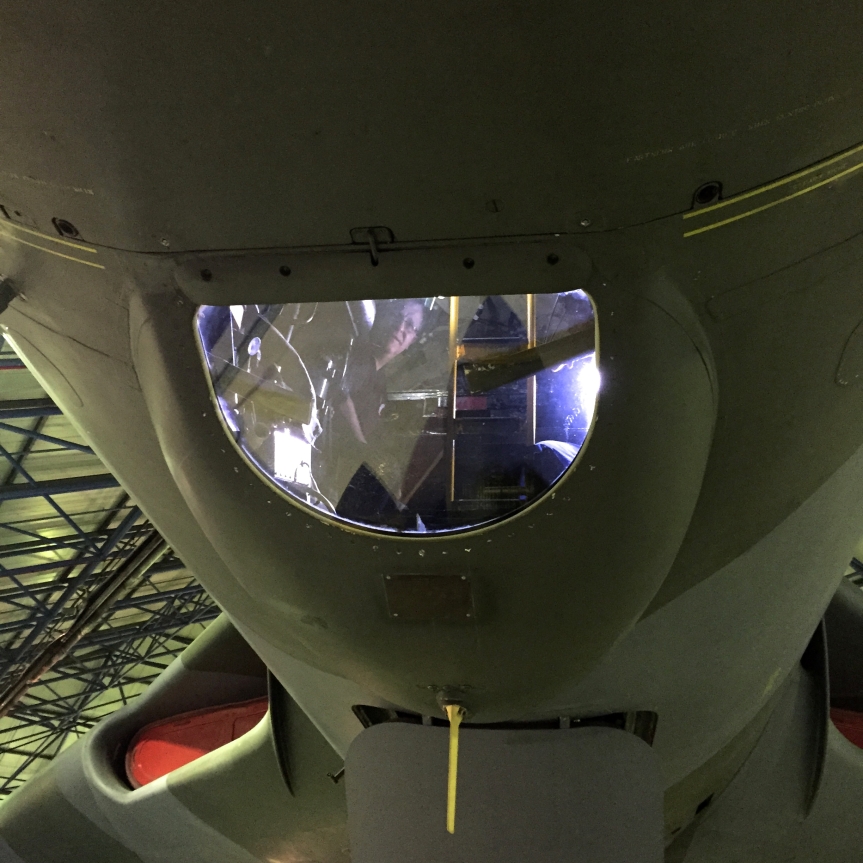
Then came the tricky bit, climbing up to the flight deck and swivelling myself into the right-hand, or co-pilot’s, seat. In the photo below you can (sort of) see the rear crew area behind me. It was pretty dark inside the fuselage. What little illumination there was, was provided by some hand held working lamps, The Museum opens this aircraft so rarely, I guess it isn’t practical to set up permanent interior lighting. Also, it was surprisingly cramped up there. Every inch was occupied by equipment and it was an interesting exercise moving about in there. For once I reckon it helped being a short-arse. Maybe the 1960’s RAF selection process weeded out anyone above 5’6″.
The pilot and co-pilot (who was also responsible for looking after the engines, transferring fuel around the many tanks to balance the aircraft, in-flight refuelling, etc., there being no flight engineer) enjoy the luxury of ejection seats. In the event of an emergency, the other three crewmen would have to exit the aircraft via the same crew hatch I used to get into the aircraft. Once they had left the aircraft the co-pilot and pilot would then jettison the canopy and eject upwards.
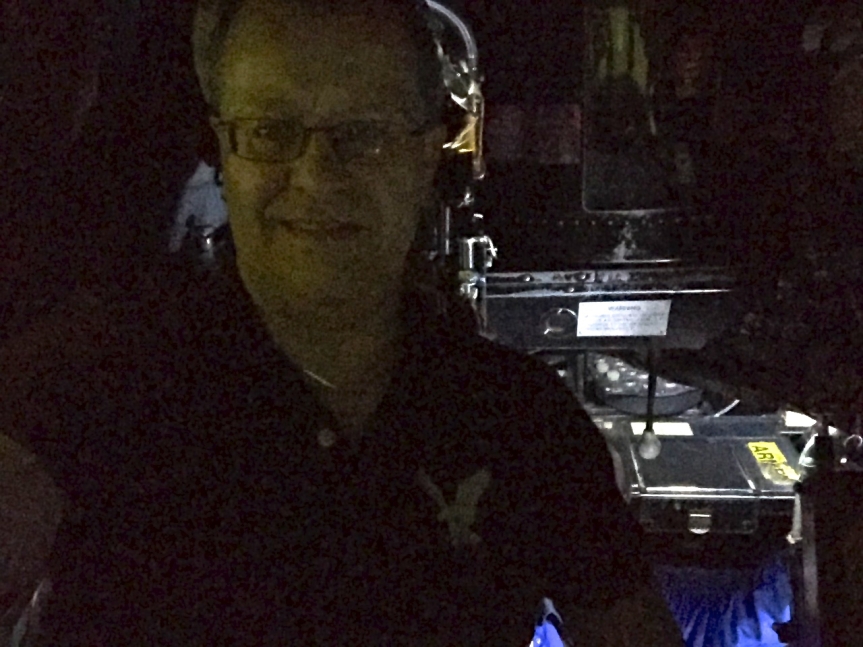
So, I’m sitting there, in the surprisingly comfortable, right-hand ejection seat, soaking up the sights and smells of this awesome piece of aviation history. If you’ve ever been inside an old aircraft you’ll probably know what I mean about the smell. It’s a mixture of metal, rubber and… something else, I’m not sure what, old air? Anyway it’s distinctive and instantly recognisable. I quite like it.
The volunteer sitting in the pilot’s seat had been a Navigator in 617 Squadron Vulcans back in the day. Between them, the two volunteers talked me through the instruments and controls, the engine start procedure – explaining the “green button” used when the aircraft was on quick reaction alert at the height of the cold war. When the Vulcans were scrambled the crews could be in position and starting the Olympus jet engines within a minute; and be airborne within 5. That’s going some!
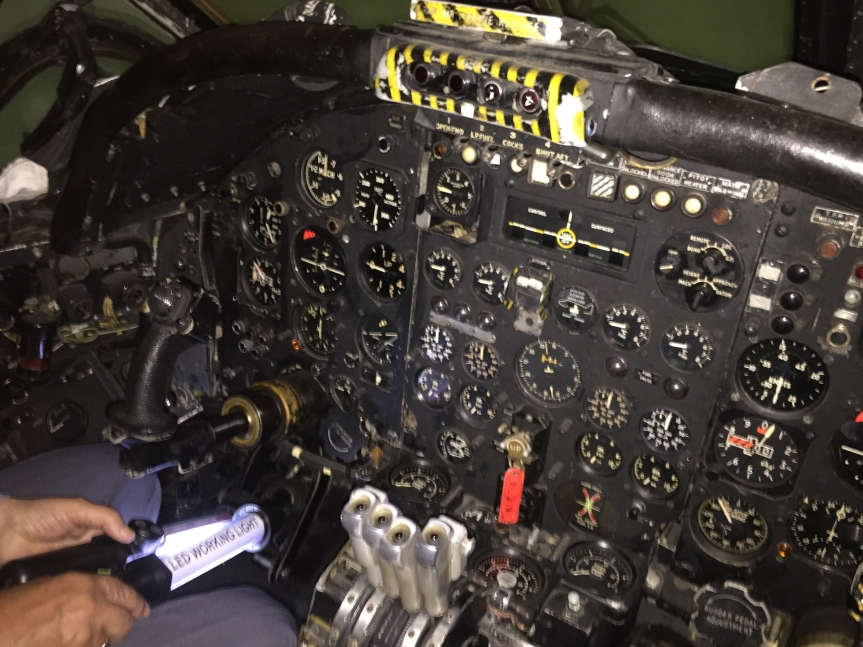
They also explained the equipment designed to block off the flight deck’s windows, this was designed to protect the crew’s vision in the event of a nuclear blast. It’s chilling to think that these chaps could have been alone up there after a series of nuclear strikes with quite possibly no home airfield to return to. Down to a sunless sea indeed.
After a few years, the Government transferred the nuclear deterrent to rocket technology – the ICBM – and so XL318 and her friends were reconfigured to the more conventional bomber role. We had a chat about “Black Buck” and the bombing of the runway at Port Stanley during the Falklands war, and the radar bomb aiming techniques they used.
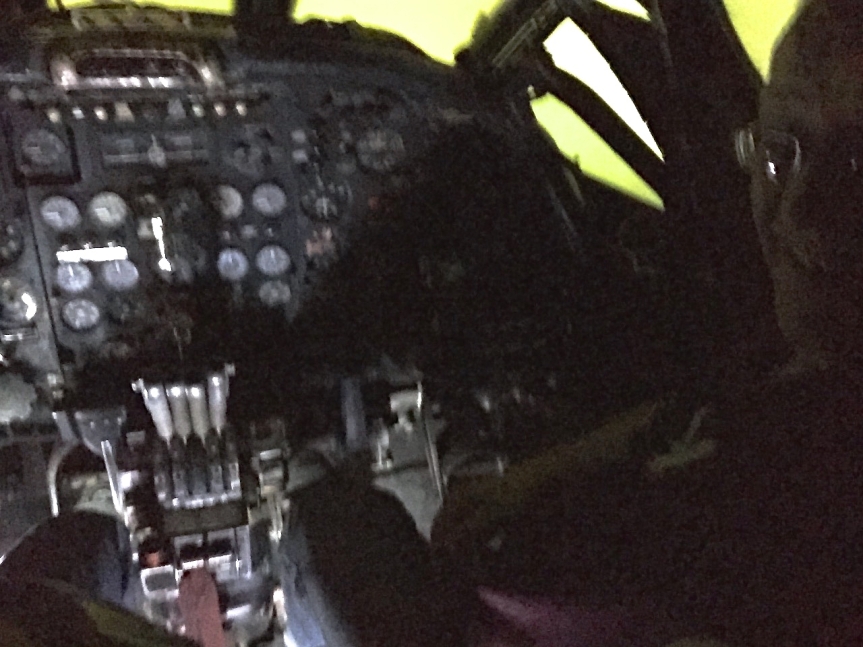
All too soon my time in XL318 was up. I managed to grab a quick “selfie” of me in the right-hand seat. With apologies for the rubbish quality – blame the limited light and lack of a flashgun on my phone’s front (selfie) camera. 🙂
I managed to extricate myself from the seat and reverse the sequence of 3 ladders back down through the hatch. Time for a quick pose for the waiting photographer (my Daughter).
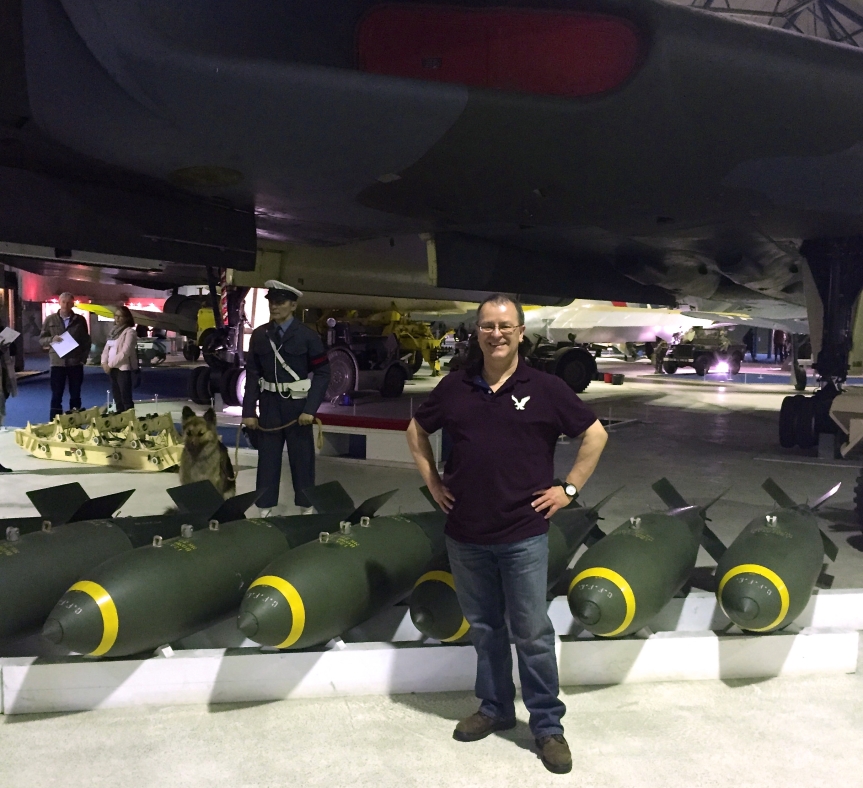
Wow. That was great. What an awesome aircraft.

You must be logged in to post a comment.